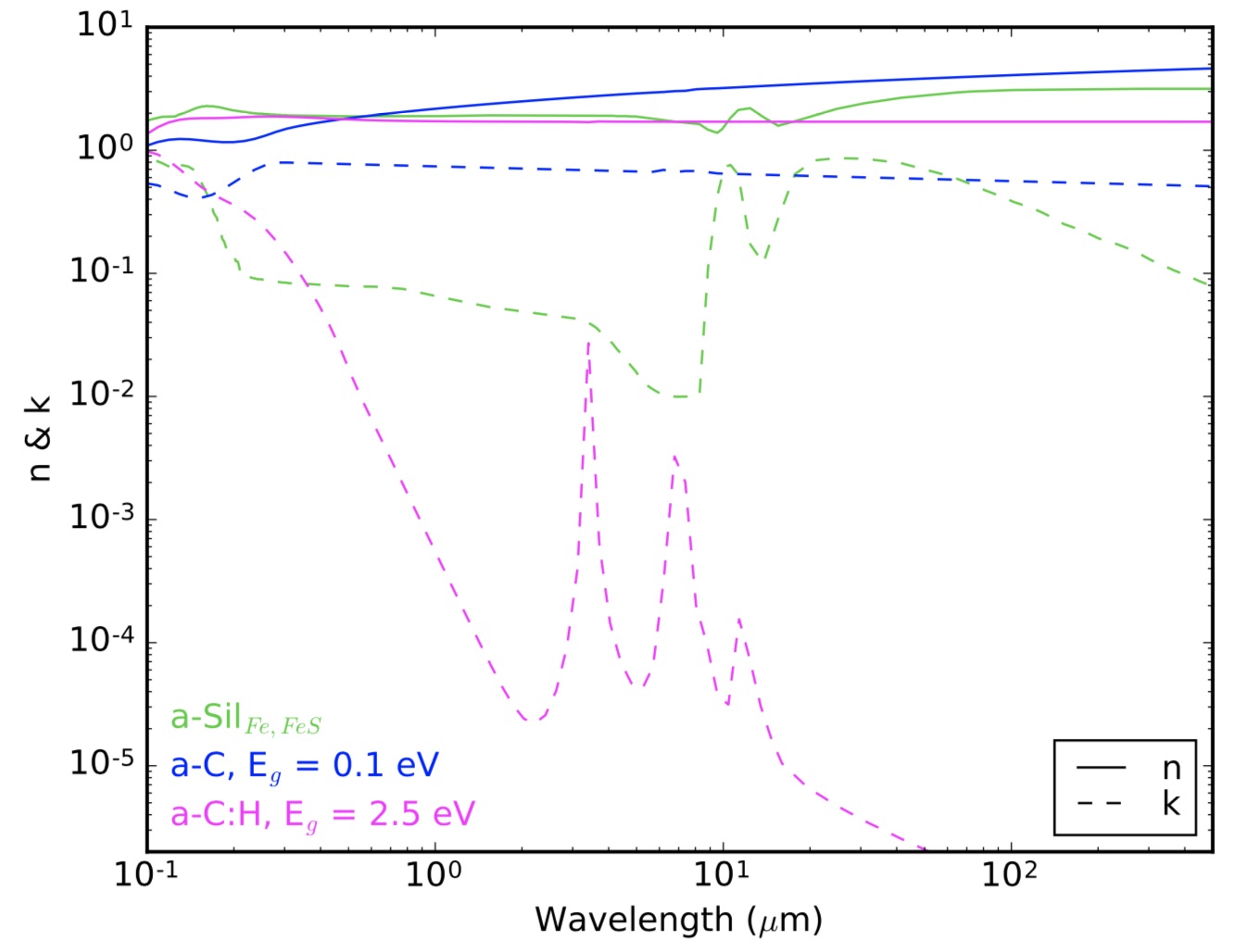Grains are determinant for setting the chemical, physical, dynamical, and radiative properties of all the media in which they are present. Their influence depends on the grain composition, size, and geometrical structure which vary throughout the dust lifecycle. Grain growth arises in dense media as traced by an enhancement of the FIR emissivity and by cloudshine and coreshine. We investigate the imprint of the grain characteristics on the dust unpolarised optical properties from the visible to the FIR for isolated grains and aggregates. Using optical constants for both carbonaceous and silicate materials, we derive the absorption and scattering efficiencies, the asymmetry factor of the phase function, the albedo, and the mass opacity, using either Mie theory or DDA. We study the effects of the size, porosity and shape of the grains, and of the monomers constituting the aggregates, on the optical properties. For aggregates we study the influence of the number of monomers and of mixing monomer sizes. Grain structure changes result in variations at all wavelengths. Porosity, grain elongation, and aggregation all produce an increase in the FIR opacity. The spectral dependence of this increase depends on the nature of the material composing the grain: it is independent of the wavelength for insulators but not for conductors. For aggregates, the FIR increase does not depend on the monomer size and saturates for aggregates containing 6 or more monomers. For silicates, the MIR spectral feature at 18 microns is more sensitive to the details of the grain structure than the 10 microns feature. This study provides a basis for understanding the range of variations achievable as a result of varying the grain characteristics. It emphasises the importance of considering the detailed grain structure in determining the dust optical properties and of using exact methods.
Ysard, N.; Jones, A. P.; Demyk, K.; Boutéraon, T.; Koehler, M.
2018, ArXiv e-prints, 1806, arXiv:1806.05420
http://adsabs.harvard.edu/abs/2018arXiv180605420Y
